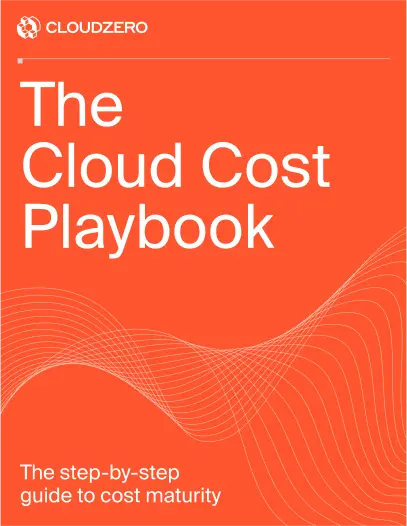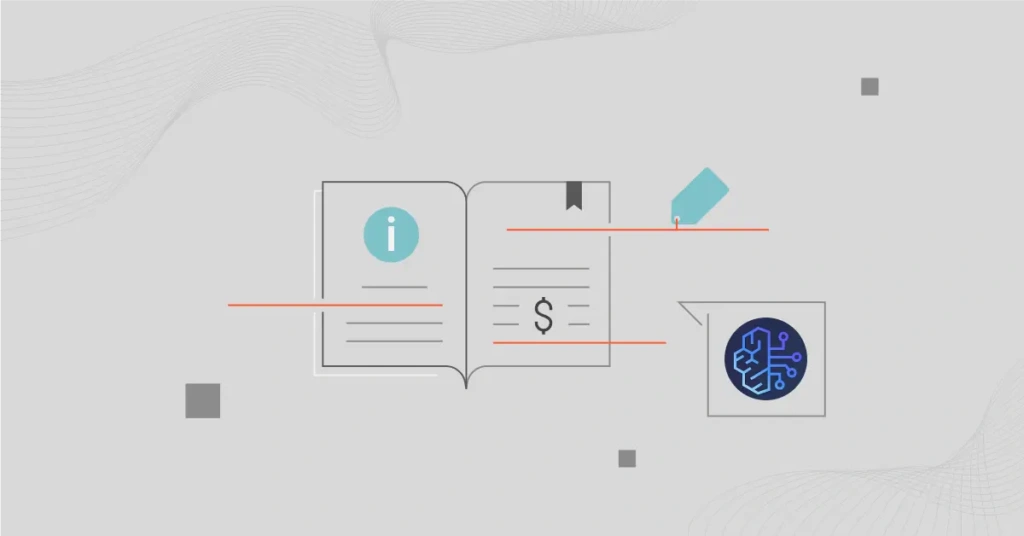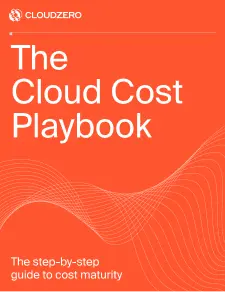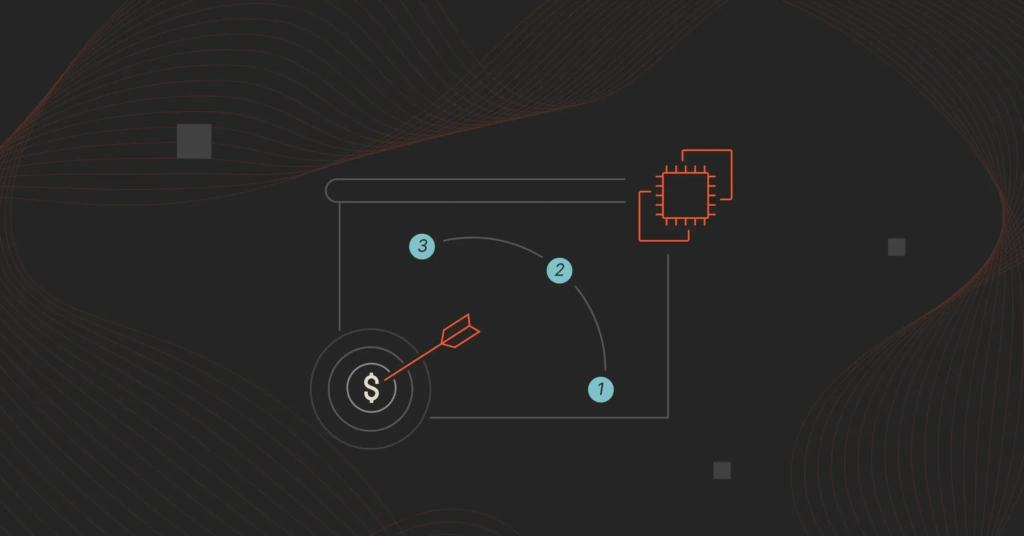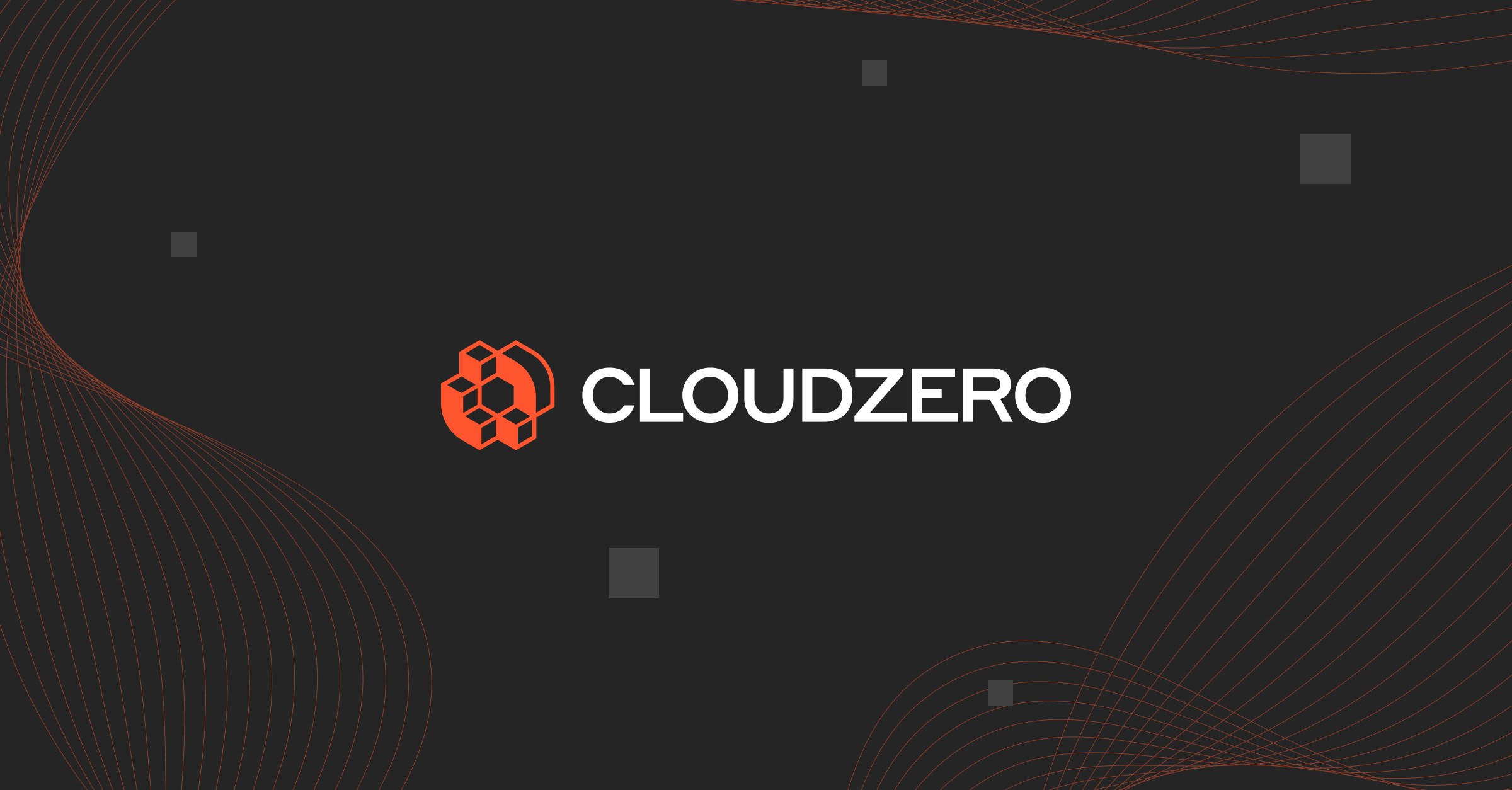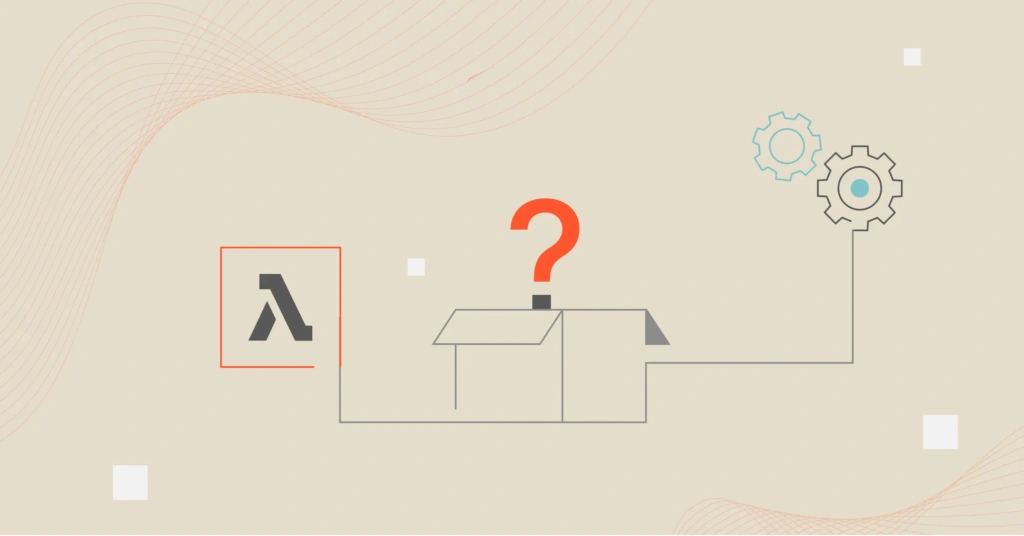If you are reading this, you likely understand how Machine Learning (ML) and Artificial Intelligence (AI) can improve your organization, from operational efficiency to boosting your bottom line.
Yet, setting up and running a robust AI infrastructure, including a massive dataset for training and specialized tools, can be expensive.
Amazon Bedrock wants to simplify this challenge, enabling you to build generative AI applications faster and easier. But is Amazon Bedrock pricing worth it?
We’ll explore this and other key considerations in the next few minutes.
What Is AWS Bedrock?
Amazon Bedrock simplifies the process of building and scaling generative AI applications. This involves providing your developers with the tools to create secure, compliant, and responsible AI solutions. That’s not all.
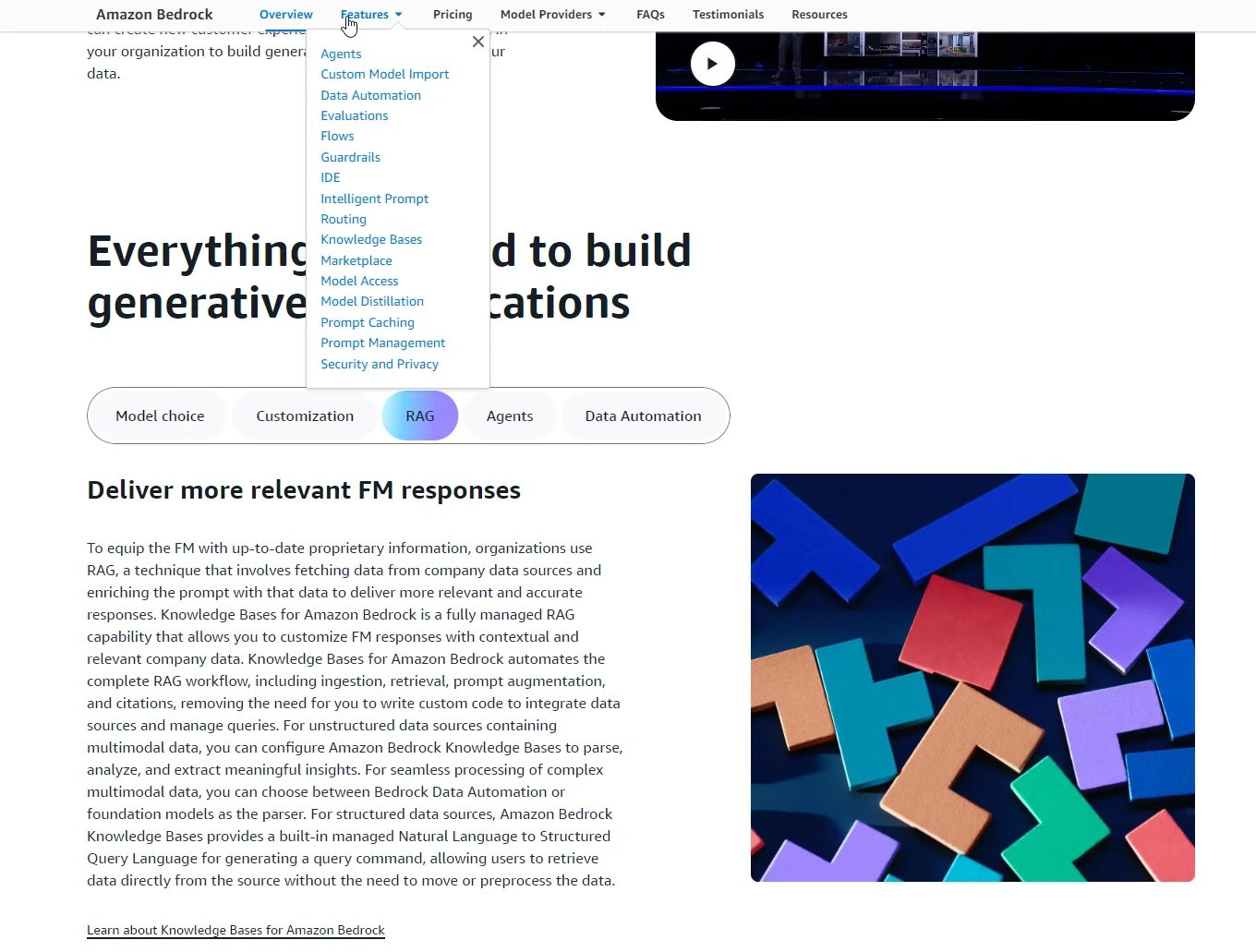
The following Bedrock features highlight the primary problems it solves for building and scaling generative AI applications:
1. Simplified access to Foundation Models
Your team can choose from a diverse range of FMs to identify the most suitable model for their specific use cases — all through a single API. AI companies such as AI21 Labs, Anthropic, Cohere, Meta’s Llama 2, Mistral AI, Stability AI, and Amazon itself are contributing their high-performing FMs.
This means you can experiment with and pick the most suitable models for your specific use cases without needing extensive AI model management expertise.
2. Supports private model customization
You can use proprietary data with techniques like fine-tuning and Retrieval Augmented Generation (RAG). This means you can tailor models to meet specific needs without compromising data security.
3. Fully managed serverless infrastructure
Its serverless architecture means you won’t need to manage the supporting infrastructure. You can focus on development rather than operational overhead to speed up innovation.
4. Solid security and privacy
Data is encrypted in transit and at rest, and access controls are enforced through AWS Identity and Access Management (IAM) policies.
5. Integrate easily with your AWS stack
Amazon Bedrock integrates with existing AWS services, so you can seamlessly incorporate generative AI capabilities into your workflows.
6. Rapid prototyping and deployment
The platform also supports quick experimentation and prototyping, swiftly helping your projects move from concept to production.
What Can You Do With Bedrock?
Amazon Bedrock’s managed agents execute various complex business tasks by leveraging their ability to automate multi-step processes and integrate with company systems.
On top of generating text and images, Bedrock agents can also help you:
- Perform financial due diligence tasks such as analyzing global economic factors, assessing industry trends, and reviewing historical financial data, synthesizing the results into a comprehensive risk profile.
- Automate the insurance claims process by collecting information from users, verifying claims against eligibility policies, and managing the workflow of documentation required for claim approvals.
- Handle complex e-commerce interactions such as updating orders or managing exchanges, responding to customer inquiries about product availability, and executing necessary actions through API calls to the inventory system.
- Analyze customer retention data by breaking down the analysis into manageable steps.
- Manage retail operations tasks like demand forecasting, inventory allocation, supply chain coordination, and pricing optimization.
These capabilities aren’t free, of course. So, how does Amazon Bedrock pricing work?
AWS Bedrock Pricing Options And Examples
Amazon Bedrock pricing offers two plans: On-Demand (and Batch mode) and Provisioned Throughput mode.
- The On-Demand plan lets you access foundation models on a pay-as-you-go basis and is ideal for unpredictable workloads.
- Batch processing mode is designed for large-scale or periodic batch processing tasks. Also, the plan offers a discounted rate per token processed compared to on-demand pricing. Batch processing mode efficiently handles multiple prompts in a single input file.
- The provisioned throughput plan is ideal for consistent high-performance needs, allowing you to provision throughput to meet your workload demands, but this requires a commitment for a one-month or six-month period. The longer your commitment, the lower the rate.
That’s the short answer.
Here’s how pricing for Bedrock features actually works, so you’ll know what you are paying for (and optimize your AWS Bedrock costs for maximum ROI).
First, Amazon Bedrock costs will depend on a couple of factors. These include:
- The volume of tokens used: Input or output tokens; billing is calculated per 1,000 tokens.
- Type of operation: For example, generating images costs more than text.
- Foundation Model: Each of the eight available FMs has a varying pricing structure. For example:
- AI21 Labs’ five models range from $0.0002 to $0.0188 per 1,000 input or output tokens, depending on the specific model you use.
- Cohere models range from $0.0003 to $0.0020 per 1,000 tokens.
- Stability AI’s SDXL1.0 model charges $49.86 per hour with a one-month commitment or $46.18 per hour with a six-month commitment.
- Amazon’s models, including pricing for Nova Micro, Nova Lite, and Nova Pro, range from $0.000035 per 1,000 input tokens to $0.0032 per 1,000 output tokens.
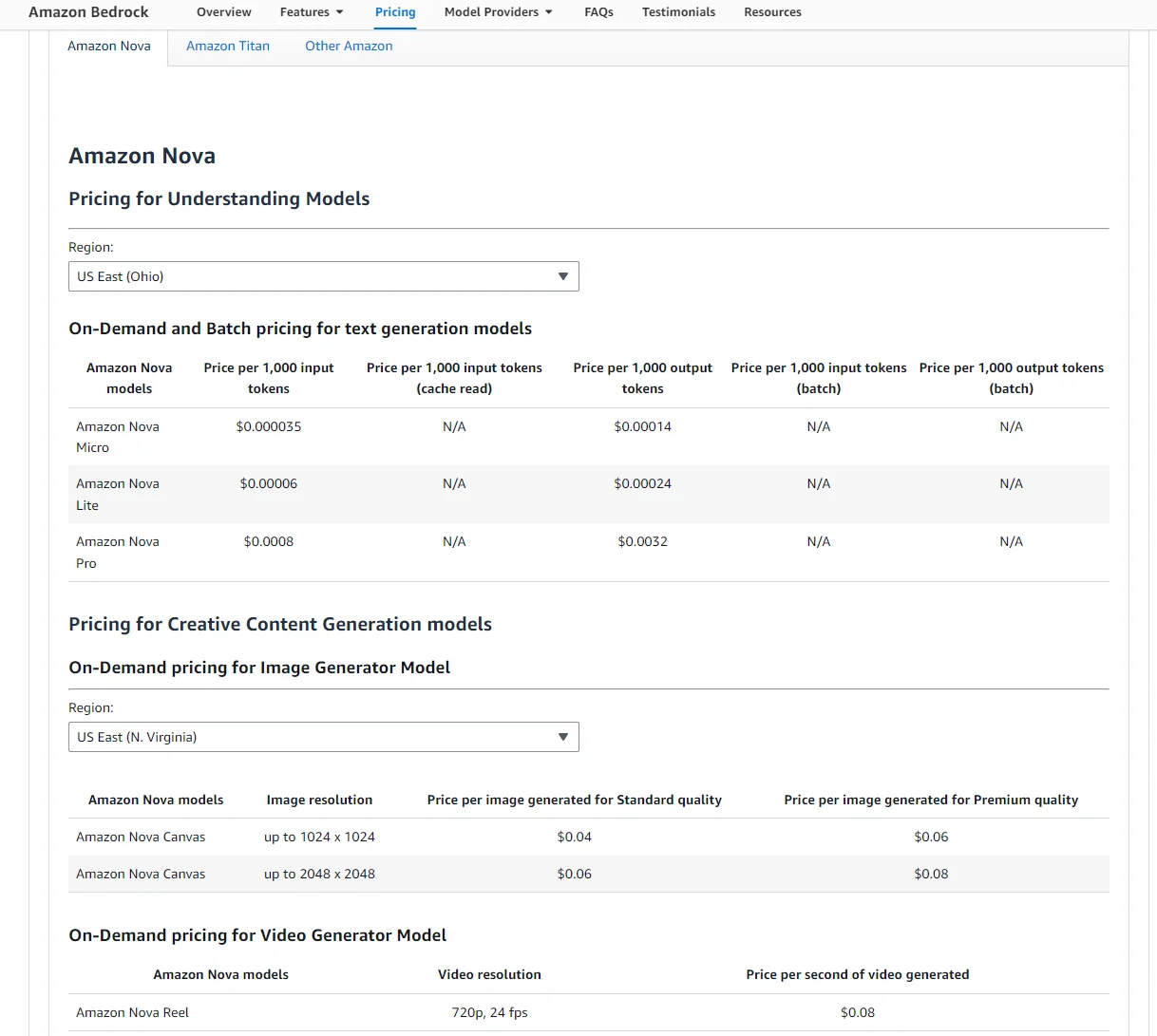
Example Amazon Bedrock pricing for Nova models
- Compute requirements: More intensive tasks require more compute resources, increasing Amazon Bedrock costs.
- Storage needs: Keeping datasets and custom models in, say, Amazon S3 has its costs, which vary based on data volume.
- Data transfer charges: During operations, they can also add up, especially if you move a lot of data in and out of Bedrock.
You may incur additional costs if your operations need to work with other AWS services or you utilize other Bedrock tools (Flows, Guardrails, Knowledge Bases, Data Automation, and Model Evaluation).
We recommend visiting the official Amazon Bedrock pricing page for the latest pricing details. Also, check the availability page to see which AWS regions and models support Batch inference. Meanwhile, keep reading to learn how to optimize your Amazon Bedrock costs the smarter way.
Amazon Bedrock Cost Optimization Best Practices
Knowing how Bedrock pricing works can help you prevent its costs from calling the shots in your company.
Fortunately, we’ve got some practical cost optimization strategies for Bedrick that you can start using right now.
Optimize your prompts
Streamline prompts to minimize token usage, reducing costs associated with input and output processing. You can also set maximum token limits for model outputs to control response lengths.
Also, consider using prompt caching. By avoiding the need to recompute responses for repeated prompts, prompt caching can reduce costs by up to 90%. This is achieved by minimizing the number of tokens processed and the computational resources required.
Prompt caching can also decrease response times significantly, improving user experience in applications that require quick feedback.
Using cached prompts reduces the cost of inference compared to non-cached tokens. For example, cache reads may incur a 90% discount on input token costs.
Save up to 50% with batch processing
For large-scale inference tasks that are not time-sensitive, take advantage of batch mode to achieve economies of scale and lower per-unit costs (compared to On-Demand pricing). Better yet, schedule batch jobs during off-peak hours to maximize resource availability and reduce costs further.
Get lower rates when you use Provisioned Throughput
This is the Reserved Instances approach for Amazon Bedrock. For applications requiring consistent performance, consider purchasing provisioned throughput with time-based commitments (e.g., one-month or six-month terms) to benefit from reduced rates.
Use intelligent prompt routing
The method uses advanced prompt matching and model understanding techniques to predict which model in an FM family will provide the best response quality at the lowest cost for each request.
For instance, it can route requests between different models in the Anthropic Claude family (e.g., Claude 3.5 Sonnet and Claude 3 Haiku) or between models in the Meta Llama family (e.g., Llama 3.1 70B and 8B) based on the complexity of the prompt.
Access intelligent prompt routing through the AWS Management Console, AWS Command Line Interface (CLI), or AWS SDKs.
See the exact people, products, and processes that drive your Amazon Bedrock costs
Continuously track resource usage and costs using native AWS tools like Cost Explorer. Better yet, use robust third-party services like CloudZero. See how Cost Explorer compares to CloudZero here.
Unlike most cloud cost optimization tools, CloudZero precisely maps your expenses to the people, products, and processes driving your AWS service costs. Beyond average costs, it also provides insights into cost per customer, per feature, and even per request.
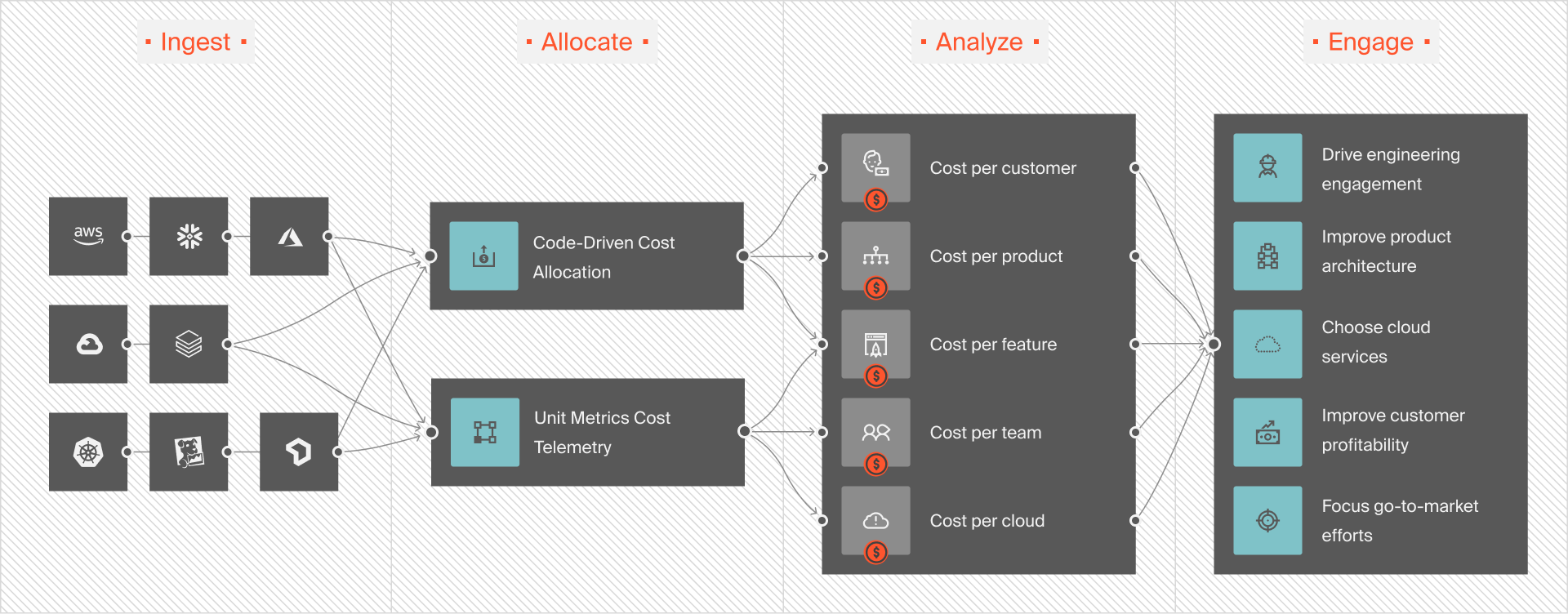
This means you can pinpoint areas where you could improve to cut waste (and boost your bottom line).
CloudZero also includes real-time cost anomaly detection. You get timely and contextual alerts to notify your team when spending approaches predefined limits, preventing unexpected overruns.  to see how CloudZero works. Better yet, get your free cloud cost assessment here.
to see how CloudZero works. Better yet, get your free cloud cost assessment here.
Minimize data transfer costs when using Amazon Bedrock
Consider the following strategies:
- Retain data in the same AWS Region as much as possible to avoid the more expensive cross-region transfers.
- When transferring data across regions is necessary, batch your transfers to minimize data movement frequency.
- Use private IP addresses rather than the more expensive public IPs for internal communications.
- Consider using AWS CloudFront, the CDN, to cache content closer to users. This can reduce the volume of data transferred from your origin servers.
And last but by no means least.
Make ongoing reviews and optimization a habit
Conduct regular reviews of workloads and AWS pricing updates to adapt strategies as business needs evolve, ensuring continued cost efficiency. For example, regularly review your data transfer reports through AWS Cost Explorer to identify and eliminate unnecessary transfers.
Want more ways to optimize your AI project costs? Check out our bookmarkable guide to OpenAI cost optimization here.
Prevent Overspending On Bedrock With CloudZero
Here’s the deal: if you’re actively invested in AI, you’re likely building crazy, innovative models on top of your company’s data. That often means AI costs are becoming large, untraceable expenses that are tough to tie back to specific features, products, teams, microservices, etc.
Not with CloudZero.
CloudZero can allocate 100% of your AI costs programmatically in just minutes or hours, even if you have imperfect tags. This level of proactive visibility prevents overspending (and emergency meetings with the board over surprise costs).
Now, it may take time before your AI projects need to turn a profit. But that day is coming. When it does, you’ll be in a much stronger position if you’ve already established the tools to track and manage AI costs. And we are happy to demo these tools for you.  — risk-free, of course.
— risk-free, of course.
Amazon Bedrock FAQs
What does Amazon Bedrock do?
Bedrock is a serverless AI platform on AWS that provides access to tools for building and scaling AI apps through a single API.
How much does Amazon Bedrock cost?
Amazon Bedrock pricing varies based on factors such as the model selected, the volume of input/output tokens used, the pricing plan used, the payment option used, and other features.
Is Amazon Bedrock cheaper than Azure OpenAI?
That will depend on your usage of either AI platform. However, Bedrock can be cheaper thanks to discounted offers and the efficiency of choosing the supporting models.
